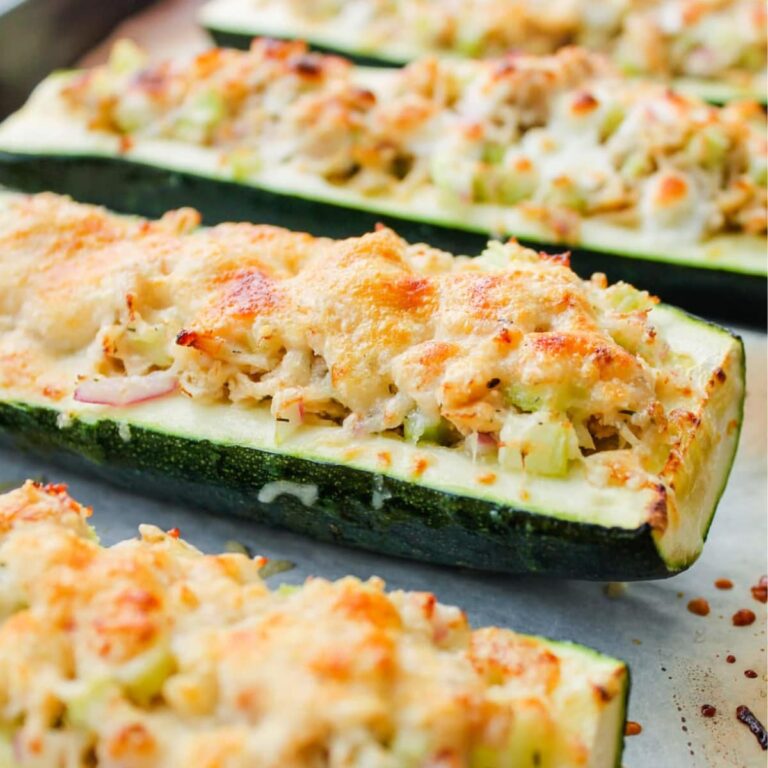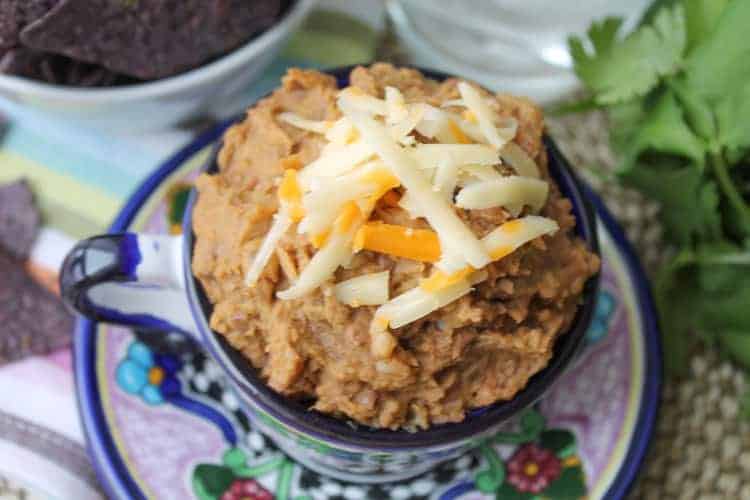Cilantro Guide: How to prep, store, and cook fresh cilantro
Few ingredients possess the aromatic allure and vibrant charm of fresh cilantro. This cilantro guide will provide all the information you need to prep, store, and cook cilantro to maximize its flavor and preserve its texture.
As an Amazon Associate, I earn from qualifying purchases.
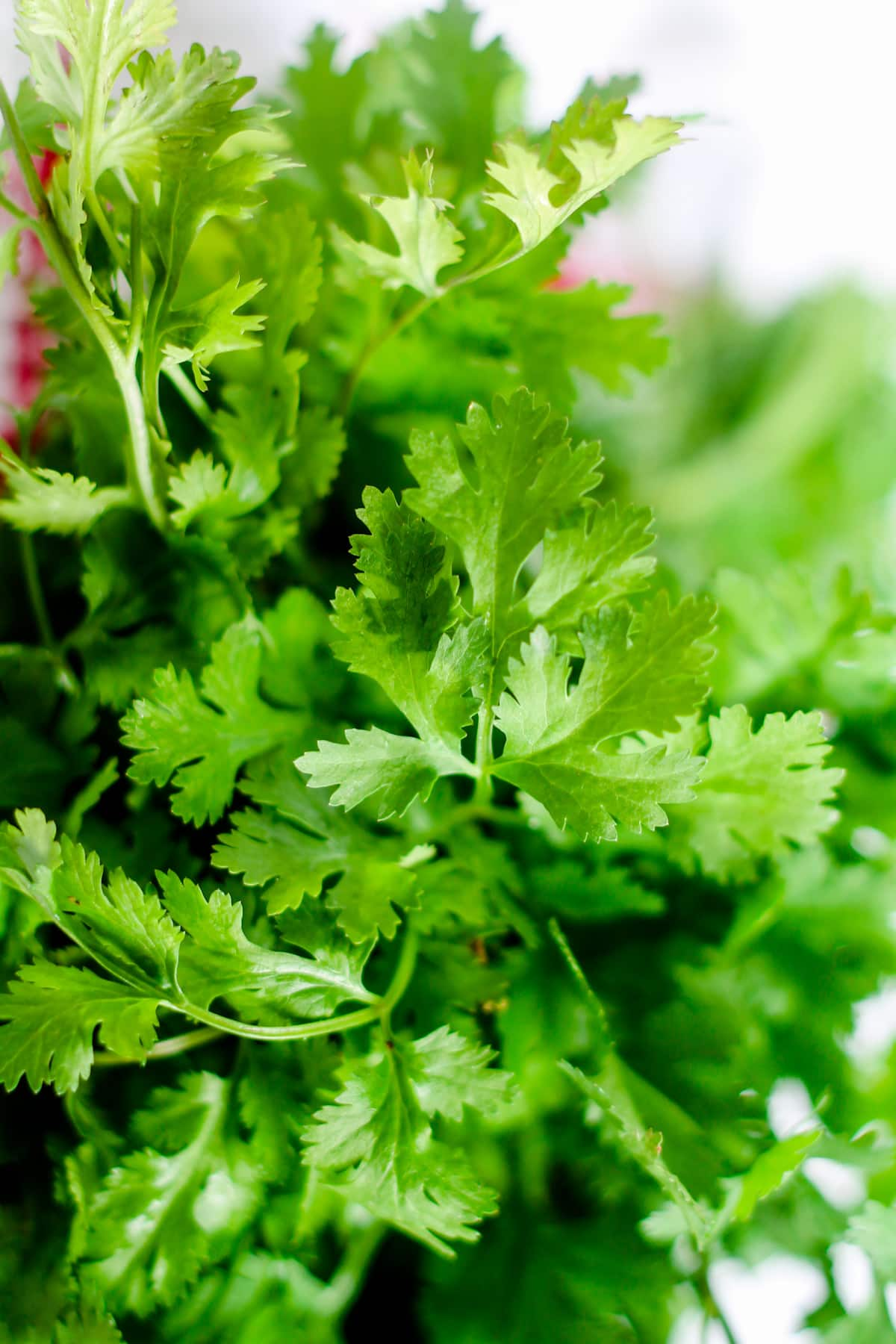
It is called cilantro in North America – Canada, the United States, and Mexico. European nations refer to both the spice and leafy herb as coriander. In India, the herb is referred to as “dhania” to distinguish the leaves of the coriander plant from the coriander seeds. Its popularity in China led it to be dubbed Chinese parsley, due to its resemblance to a parsley-like green.
All these name variations aside, cilantro is delicious to add to sauces, salads, dressing, stews, pesto, and much more! As for nutrition, it contains vitamin C, A, and K, as well as trace amounts of manganese and folate. Cilantro is a wonderful herb.
How to determine freshness
Fresh cilantro, known in many countries as fresh coriander, is a green herb with feathery, flat leaves attached to a thicker, sturdier stem. Both the leaves and the stalk of the plant are edible. Cilantro most closely resembles parsley in shape.
If you don’t have space to grow herbs at home, you will want to buy cilantro from your local store or farmer’s market. Look for bunches of fresh cilantro leaves that are bright green in color, fragrant, and healthy looking. Avoid bunches with clusters of black, brown, or yellow leaves, mushy spots, or wilted leaves and stems.
Cilantro is typically available year-round at grocery stores, but it is in season from late spring through early summer.
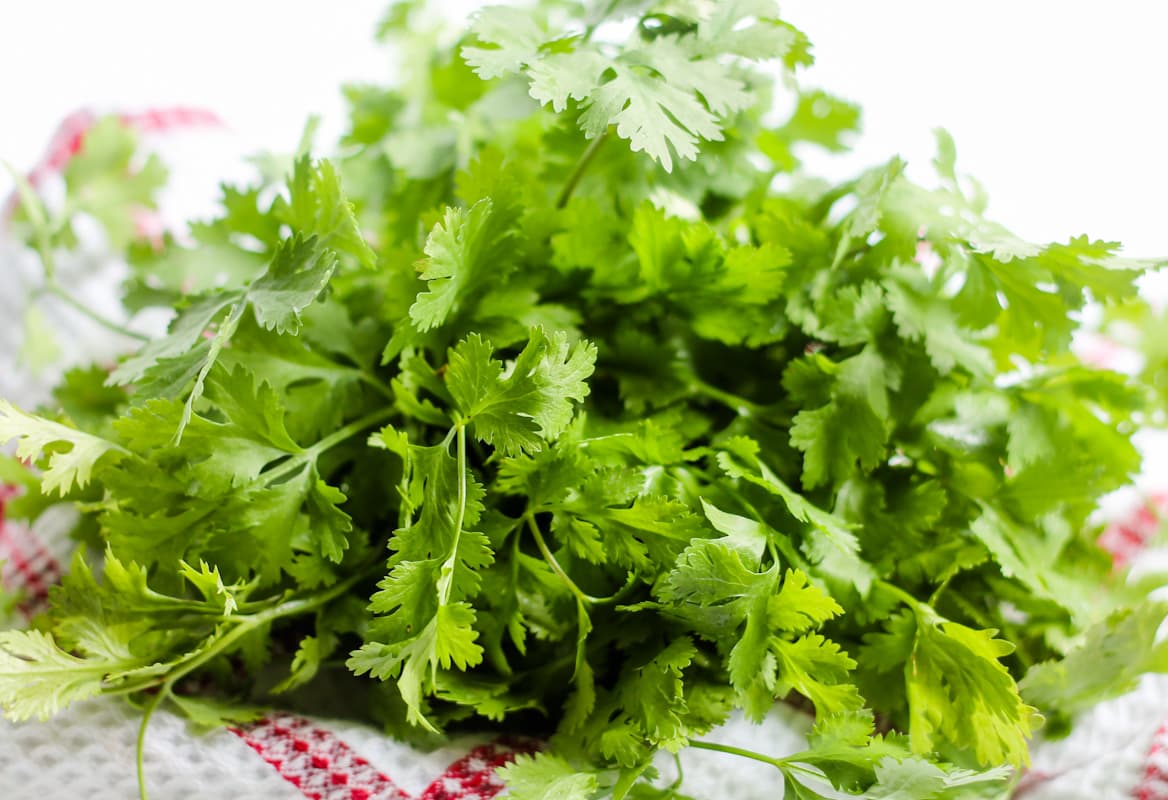
What does cilantro taste like?
Cilantro has a pungent and citrusy flavor, with hints of pepper. Most people enjoy the fresh flavor, however, due to natural aldehyde chemicals in cilantro leaves, some people have a genetic predisposition to perceive the taste of cilantro as soapy.
“I love fresh cilantro on my scrambled eggs, chili, tacos, and in mango salad, although the rest of the family says it tastes like soap! I grow it in pots on my balcony through the summer and store it wrapped in damp paper towels in the fridge when needed.”
— Sarita Harbour, An Off Grid Life
How to properly prepare cilantro
There are a few steps to take before storing your cilantro in the refrigerator. If the cilantro has been purchased at the market, remove any rubber bands, twist ties, and packaging. Examine the cilantro for damaged and discolored leaves. You will need to remove these and dispose of them before moving forward.
Gently wash the cilantro under cool running water, rotating the bunch so that it is cleaned thoroughly and evenly. You can remove excess moisture by allowing the cilantro to dry on the counter, or you can use a salad spinner.
Once dry, you can store the cilantro.
Storage Suggestions
Cilantro can wilt fairly quickly if it is not properly stored. There are several ways to store cilantro to increase its life and preserve its flavor and texture.
The first option is to store cilantro between two dry paper towels.
“I always have a bunch of cilantro in the fridge to add to salads, rice, and Mexican dishes. Store it in an airtight container with a layer of dry paper towel on the bottom and top and the cilantro will stay fresh for weeks.”
— Jere’ Cassidy, One Hot Oven
The second option is to store cilantro with damp paper towels, ensuring the leaves do not dry out while in the fridge. This is the most commonly recommended storage method. First, run a paper towel under cool water, wring it out so that it is only damp, not wet, then gently wrap the cilantro and place it inside a plastic or reusable silicone bag.
You can then safely store the cilantro in your produce drawer for later use.
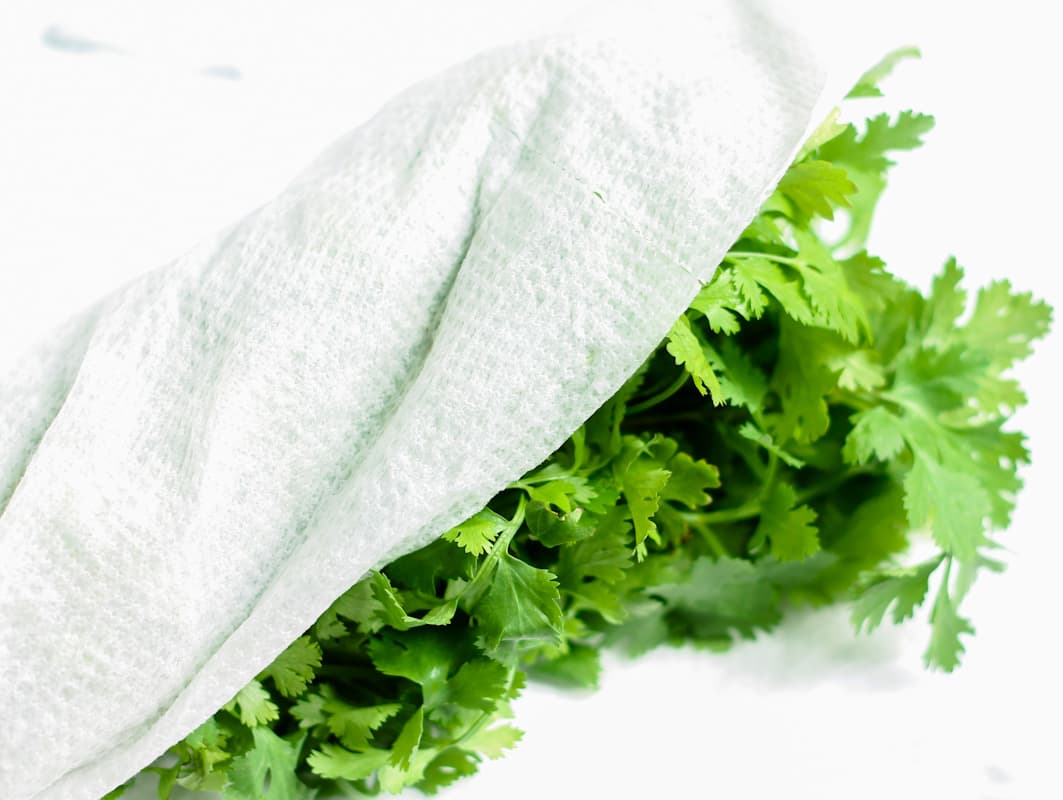
Dehydrating cilantro is a third option. This will dry out the herb until it is brittle like the jarred herbs you would purchase at the store. You can either dehydrate it in the oven or in a food dehydrator at a low temperature before storing it in an airtight container, such as a jar.
Finally, you can freeze cilantro. To do this, finely chop the cilantro leaves and stems and add a small amount to each compartment of an ice cube tray. Cover the herbs with cold water and move the tray to the freezer. For the best flavor, use frozen cilantro within six months of freezing.
Keep in mind that frozen cilantro will be less flavorful and aromatic than fresh or dried cilantro. It can, however, still add freshness and flavor to a variety of dishes like soups and chilis.
Cooking with fresh cilantro
While cilantro has a pungent, lemony, peppery taste, it is still a soft, delicate herb.
Unlike hardy herbs such as rosemary, cilantro is more of a finishing herb than one that can stand long cooking times. If you add cilantro to your dish too early, its flavor and texture will be neutralized by the heat. The best time to add cilantro to a dish is at the last moment.
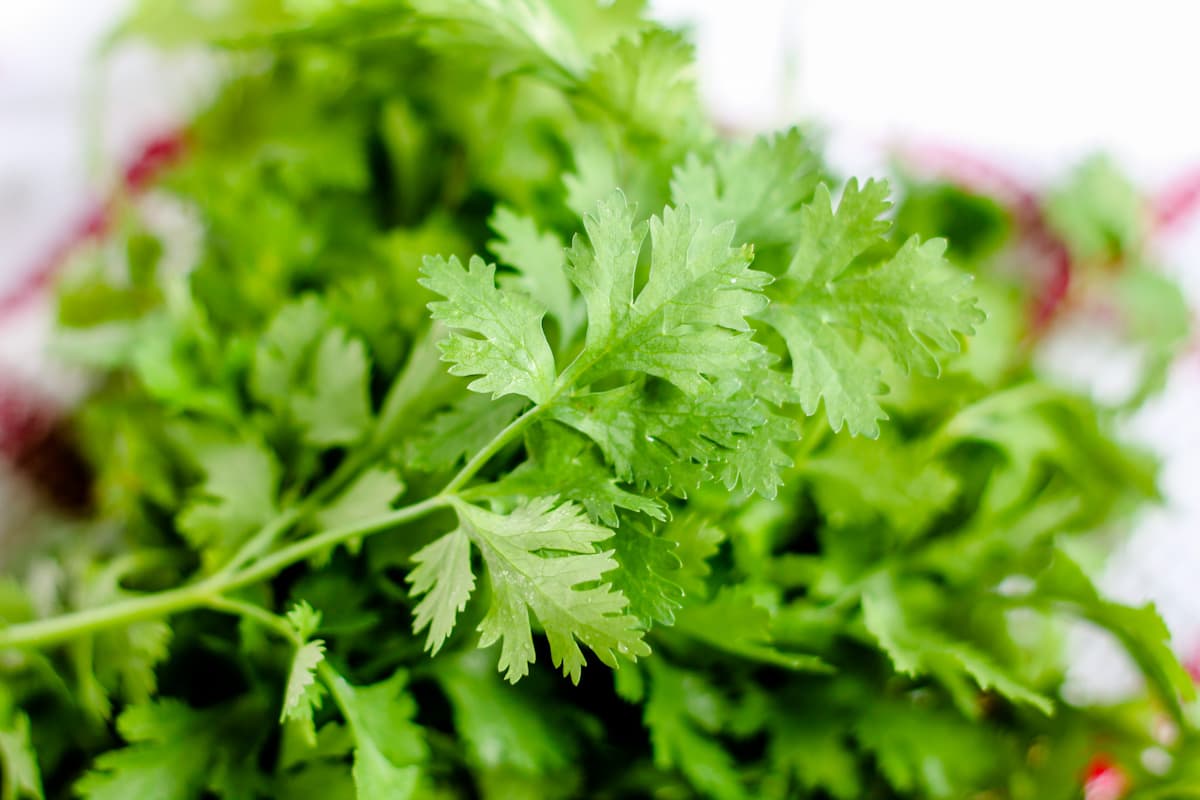
“When I was a child, I used to hate cilantro, but now I can’t get enough of it! When I cook a curry, I love to add it just at the last moment. It lifts the whole dish and balances the hotter spices.”
— Mandy Applegate, Splash of Taste
Cilantro is excellent across a wide variety of dishes, from salsas and dressings to salads, sandwiches, and wraps. It’s delicious sprinkled on dishes from Mexico like enchiladas, quesadillas, and tacos.
This fresh green herb pairs beautifully with lime. This Avocado Cilantro Dressing with Lime does double duty for salad or as a marinade and check out this recipe for Chipotle copycat for Cilantro Lime Brown Rice.
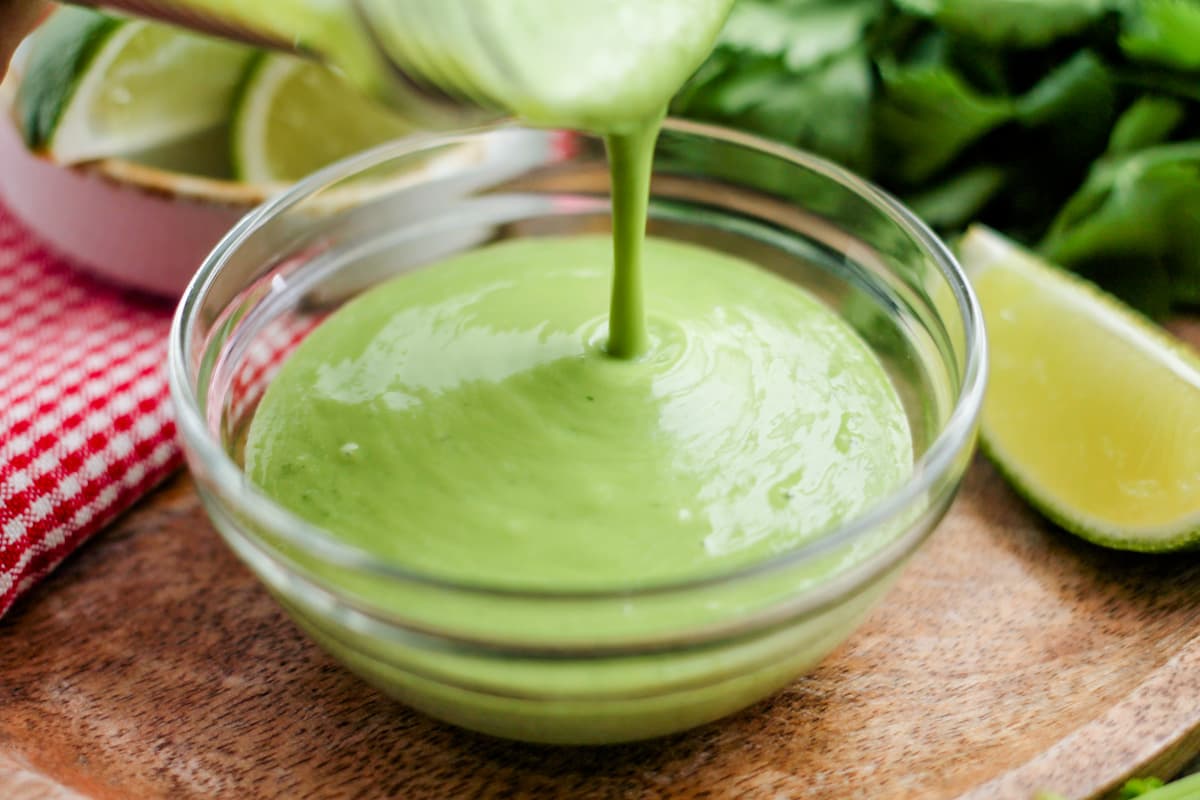
Cilantro is also popular in Thai, Vietnamese, Latin American, and Caribbean cuisines.
You can either roughly or finely chop the leaves and stem of the cilantro, or you can remove the leaves and use them as a garnish to your dish. This is simply a matter of preference. The stems of the cilantro are a bit coarser in texture, but they are extremely flavorful and should not be wasted.
Final thoughts
While cilantro has a pungent, lemony, and peppery taste and aroma, it is a delicate, soft herb and needs to be treated with care. It is important to choose a fresh bunch that appears healthy and does not have discolored or wilted leaves. Instead, choose a fragrant, bright green bunch.
There are many ways to store cilantro. The most highly recommended method is to wash and store the cilantro in a plastic bag gently wrapped in damp paper towels. You may also freeze or dry the cilantro for later use.
To highlight its flavor and texture best, add cilantro to your dish at the last moment. Be sure to try it in a variety of cuisines and dishes, from Thai curries to Mexican salsas. Experiment with using fresh cilantro in new ways and you are sure to open a world of new culinary delights.
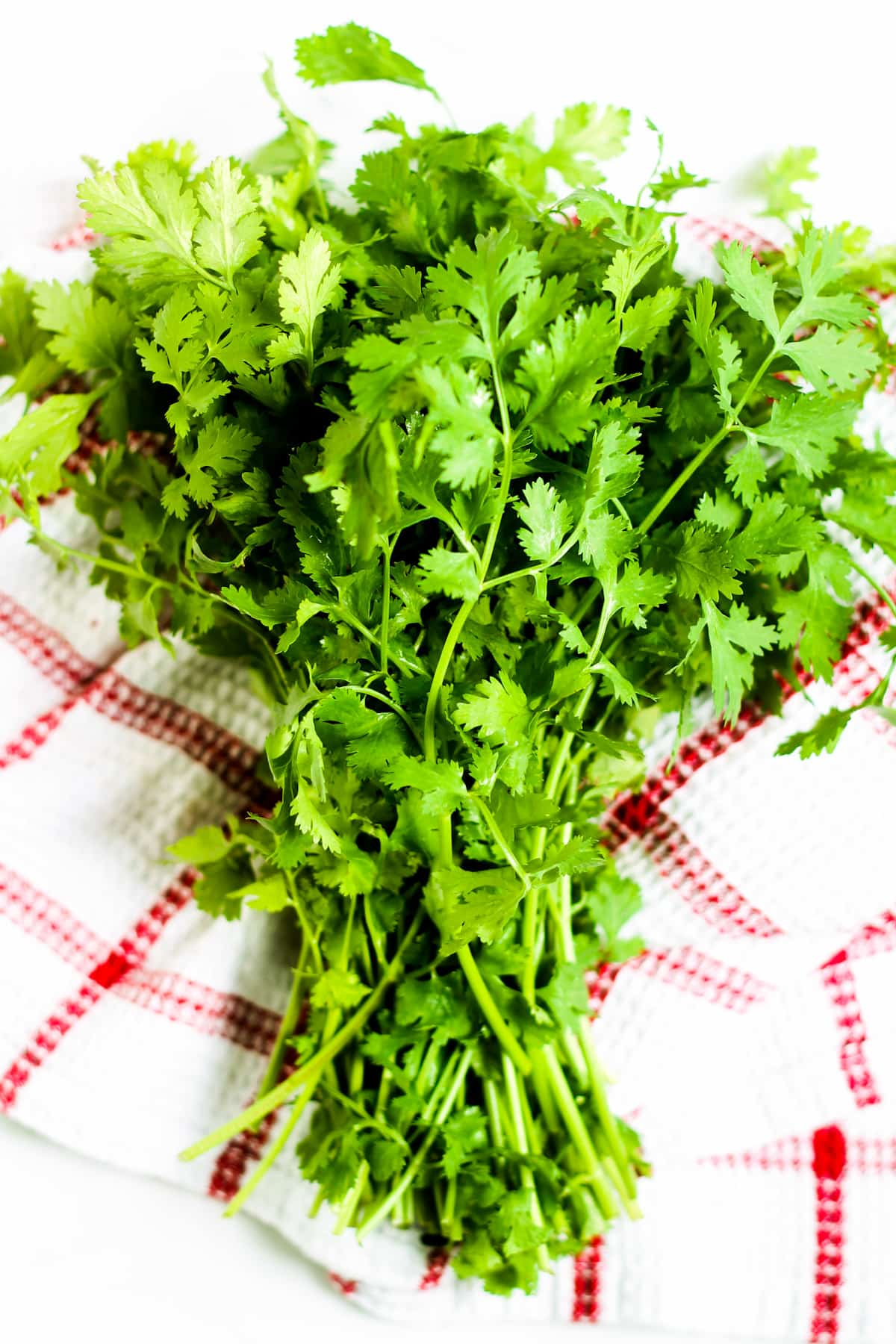
Gen is a professional chef, writer, and editor living in Southern California. She is the owner and recipe creator behind Two Cloves Kitchen, a food site featuring contemporary, California-inspired recipes. She has edited over 20 novels, short stories, and essays for publication.
This article originally appeared on Food Drink Life.
If you’ve made anything with cilantro or have any other ideas for the cilantro guide, let us know by leaving us a comment below. We’re always interested in feedback!
Be sure to follow us on social media! We love pinning to Pinterest, sharing on Facebook, and posting pics on Instagram. See you there. 🙂
As an Amazon Associate, I earn from qualifying purchases.




